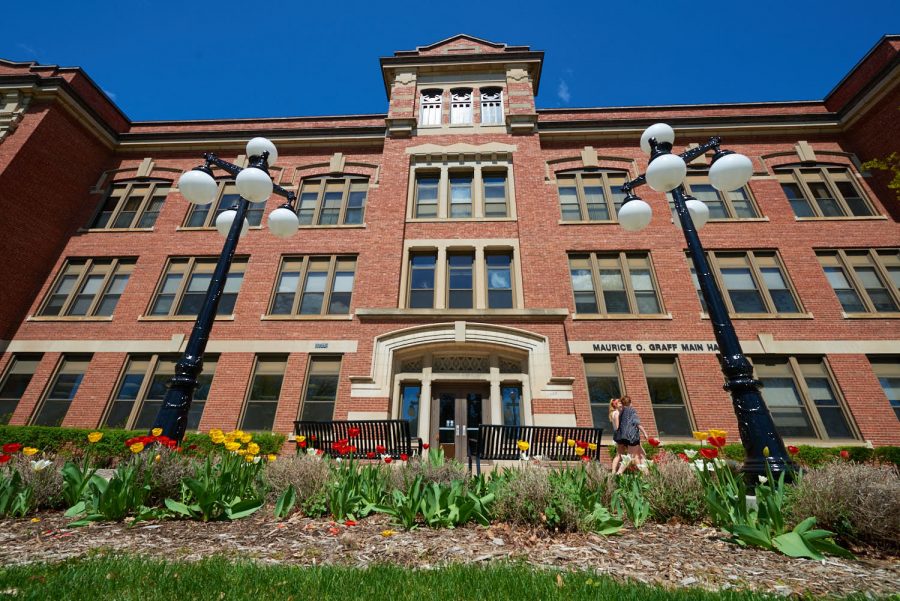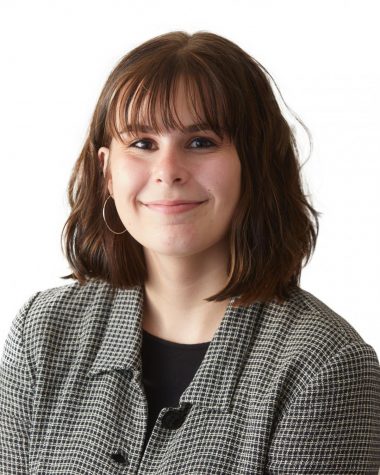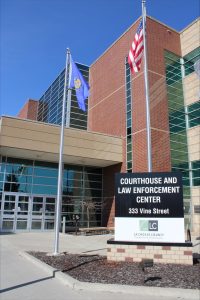Former UWL professor Joel Elgin’s lawyer releases statement regarding UW system investigation
January 26, 2020
On Sept. 4, 2019, University of Wisconsin-La Crosse student Caycee Bean posted on social media accusing former UWL professor, Joel Elgin, of sexual misconduct. In the Spring of 2015 Bean filed a report against Elgin but the investigation was closed.
In the Fall of 2019, the investigation was re-opened and UW system services lead the investigation. Their findings were presented to Chancellor Gow in November and were made public on Jan. 22.
In the investigation, other students came forward and shared experiences similar to Beans. Elgin retired from UWL on Jan. 1, 2020. Elgin’s lawyer, Cheryl Gill, released a statement regarding the UW system investigation and the conclusion that Elgin was found guilty of sexual harassment. Elgin denies all claims of sexual harassment.
GILL’S RESPONSE TO UWL INVESTIGATION REPORT DATED 11/18/19*
“Professor Elgin denies any claim of sexual harassment.
Professor Elgin retired on January 1, 2020. His twenty-four years of teaching includes numerous highlights including: Selected as UWL’s Teaching Scholar for the 2007-08 University of Wisconsin System Teaching Scholar Program and nominated by UWL for the 2018 Wisconsin Academy of Science and Letters 2018 Fellows Award. His SEI’s and Rate my Professor numbers and comments place him among the top performers at the university. His personal file is spotless, it contains no complaints.
Professor Elgin is a classically trained figurative artist. His artwork has been featured internationally. As a figurative artist he teaches students to draw using the human figure as a model. He teaches students to draw by drawing themselves.
As detailed in the initial report, on June 21, 2019 the student concern involving an incident four years previous (spring 15) was dismissed in a meeting with Nizam Arain, and Dean Vogt. Chief Human Resources Officer HR Director John Acardo chose not to attend the meeting. Professor Elgin was assured this concern was complete, the matter had been reviewed and the Title 9 team had made the decision to look no further. Professor Elgin, Nizam Arain and Kim Vogt. discussed a number of situations where instruction in the arts might be potentially problematic. Nizam Arain mentioned it can be the same in Chemistry. Professor Elgin suggested he research and develop guidelines for making the art department a safer environment for students, models and faculty and Arain agreed to work with him. Initial work was completed by Elgin, reviewed by Arain. Elgin, as Department Chair was in the process of setting up an Art Department task force to finalize the procedures when he was placed on administrative leave. At the conclusion of the meeting, Professor Elgin asked that the student be contacted and was assured she would. Professor Elgin wished her to know he was sorry for any interaction that might make her feel uncomfortable. The Title IX Team failed to contact the student until she approached them in early September. The Title IX team had not been in contact with the student since her initial concern March 7, 2019. As one investigator pointed out, had HR had arranged a mediation, this concern could have been resolved.
After approaching HR on 9/4 2019, the student took her issue to Facebook/Social Media/ creating a firestorm of hate and bias on campus. The student’s legal team and campus groups and campus administration continued to feed the fire on campus making UWL an environment where due process was impossible. Bowing to social media, the UWL administration corralled investigators from the University of Wisconsin’s Shared Services.
The Shared Services report from November 18, 2019 is not an impartial document. This “investigation” is not a legal matter. There is no actual proof to their findings. The investigators selectively included the information to support a case against Professor Elgin and ignored his testimony, as well as the numerous supportive statements and interviews from past, current students, parents and from faculty and staff.
In the initial complaint from March, the student admitted to approaching Elgin for assistance with drawing. The report now claims, Elgin asked ” if she would like one-on-one drawing instruction”. The investigators claim, Elgin led “her into a room with a locked door” There is no evidence of a locked door. Th ex-student “cannot recall whether Elgin locked the door, or whether it locked automatically.” The accusation that Elgin “locked her in” was a large part of the Facebook hysteria. There is no evidence that a door was locked or someone “jiggled” a doorknob. All the doors on that floor, in that building, lock from the outside automatically. However, anyone on the inside can freely and without a key, unlock the door.
Though Professor Elgin corrected the investigators on a number of occasions, the report continually refers to the “small, paper room or the dark closet” that was used for the tutorial. The room in question, 304 is larger than the typical Center for the Arts third floor office. At 12’ by 15’ – it is NOT a paper closet or paper room; it is large enough to function as a studio and storage for materials. It has a sink, refrigerator, microwave, studio lights, large drawing table and flat files. When Elgin conducts tutorials in the room he sits and draws with his back to the sink, students or models are between him and the two doors. Both doors open from the inside and open in. Again, anyone on the inside can freely and without a key, unlock the door and leave.
The tutorial itself was fully explained to the investigators. It was emphasized that the tutorial is a mechanical method of teaching drawing. It is not sexual. The tutorial is used in all of Elgin’s drawing classes and in shortened versions for studio hours. Professor Elgin offered office hour tutorials to all of his students. In those tutorials Professor Elgin used a classic method for teaching drawing—Leonardo DaVinci’s Vitruvian Man. This method, which is also known as “The proportions of the human body according to Vitruvius”, requires the teacher to draw while explaining the theory of the proportions. One of the primary principles is: “Then again, in the human body the central point is naturally the navel.” It is clear that a discussion of the body is a requirement of the method and not a sexual comment.
The report incorrectly states that Professor Elgin acted contrary to his usual behavior because he allowed students to take an upper level class without fulfilling the prerequisites and because he gave private drawing lessons. Neither was unusual. Numerous students could testify that he allowed them to take classes without taking prerequisites. This is an Art Department practice used by all faculty to assure enrollment.
As previously noted, despite her claim of harassment, the student continued to take classes from Professor Elgin. After this allegedly happened, she took two more classes from Professor Elgin. There are many other professors in the department as well as adjunct professors. She did not have to take a class from Professor Elgin.
Following the extensive media and social media coverage, the investigators produced three outrageous accounts designed to blemish Professor Elgin’s character. The three statements included by the investigators were obviously spawned by the Facebook frenzy. There are no sworn statements. The responses to the statements by Elgin and his attorney were ignored or adjusted to support the student’ case.
When corrected by Elgin and his attorney, the investigator removed an original statement from a 2005 student that states that Elgin would personally pay her “35 dollars an hour in cash” to model. By editing the original, the investigator, has removed an obvious mistruth. The $35 statement clearly reveals the 2005 student lacks the ability to accurately recall the events from 2005. Further the student was a sophomore, not a freshman when she took ART 104. She took the next level printmaking course ART 218 the next semester. Art 218 is not a higher-level printmaking course. She didn’t need an override. Further, there was no “paper room” in 2005. Room 304 was open and used as a workspace by printmaking students. The mention of locked doors and a knock on the “paper room” door is a coached statement taken from the original student’s concern.
The report states the student suffered from broken trust. An email to Professor Elgin from the student sent in 2010 reveals the opposite:
“… How are you!? I really hope this finds you in good health and smiles, you deserve it. I miss you, my sisters and brothers and the shop so much but everything from that room I have kept close to my heart.”
The report includes a former anonymous student. The investigators again ignored the information provided by Elgin and his attorney. The anonymous person claims to have audited Elgin’s class. Professor Elgin rarely accepts audits, 1 audit in 2010, 1 audit in 2016, 1 audit in 2018. NO audits in 2013. As clearly stated to the investigators it is an absolute lie that Professor Elgin “caressed” this mystery person. No evidence exists in Elgin’s completely clean personnel file of any other complaints and certainly no evidence exists of him inappropriately touching a student in a sexual way. For the third time the investigators have included that in office hours students “expected to draw”. As explained to the investigators and any student, in any office hour, Professor Elgin is the one who draws, and the student learns through watching and then later practices what is demonstrated. This is how art is learned.
The report has neglected to include numerous key points in its statement from the two models. The University of Wisconsin-La Crosse has policy regarding the hiring of models in its art classes. Students are routinely told, by Professor Elgin and others, that, if they want to model for art classes, they have to sign up through the Art Department office. Students are put on a list of available models and are hired by the individual professors. The University pays them. Professor Elgin only hires models through that administrative system. Professor Elgin was contacted initially by one of the models in April 2016. In October of 2016, Professor Elgin was approached again and met with one of them. He described modeling and directed them to the Dept. to complete paperwork and discussed the optional practice of introducing/teaching modeling prior to their first session in front of a classroom since neither had been in an art class previously. The student agreed and an open morning was scheduled at a nonclass time. Both arrived on March 28, fully aware that they would model, and they would be paid for the modeling session. There is no “audition” to be a model. The modeling session was pre-scheduled and paid through art department funds.
Models are free to model clothed, partially clothed or nude. IT IS THEIR CHOICE! Professor Elgin has never asked a model to remove clothing that they were uncomfortable removing.
The purpose of the activities in the October 28 modeling session was to teach the practice of modeling. Professor Elgin has trained the majority of models in his tenure at UWL. The 2.5-hour session he conducted on October 28 was the actual length of time of a studio art class. He taught the models how to model using the exact time structure used in a class. He introduced the variety of pose lengths, used a variety of media and explained the media, including the use of photography. They were asked and agreed to the photography. The photographic work was deleted when one of the models decided not to become a university model. It is common standard practice to delete all photographic model work that is not exhibited.
Further the investigator failed to include the fact that most recently in 2017, Elgin and another instructor trained a model in exactly the same, in exactly the same room using a draped table as the model stand, studio lights to create shadow. This room is not a dark closet. This room is appropriate for model work and it’s a room that only Elgin schedules. The rooms that are NOT on the third floor are not his to directly schedule. This was a scheduled, paid modelling session patterned after an actual class. This is not sexual.
The student complaining about modeling for Professor Elgin continued to happily model for his classes. Again, why continue to put yourself in a supposedly uncomfortable situation when there are other professors?
The statements from Williams and Shrestha are biased. As the senior member of the Department, it is Elgin’s professional obligation to be critical of their performances and if need be, not be supportive of their promotions. (Shrestra left the university three years ago). If these vindictive accounts are included why aren’t all the positive accounts included?
The Chancellor mentions miscommunication, or as he refers to it “human error”; “As an institution, we acknowledge the university should have been more prompt in communicating the result of this investigation with the student and regret the negative impact this had on the student.” The role of administrative “human error” and the universities unwillingness to control the negative power of social media has violated due process and created a hostile negative learning environment across the UWL campus.
Professor Elgin has been forced to accept early retirement or face the loss of retirement benefits. He has lost a career and the university has lost one it’s most respected and most popular professors.
It is unfortunate that Professor Elgin has to use the media to make his case. In a courtroom, or other unbiased tribunal, Professor Elgin could have cross-examined these complainants and tested their conduct, memories and biases. As the esteemed law professor and jurist John Wigmore stated, “ cross-examination is “beyond any doubt the greatest legal engine ever invented for the discovery of truth.” Likewise, these complainants could have done the same. A judge, trained and experienced in conducting a trial, would have been able to separate relevant from non-relevant information. If not a judge, then someone who, by appearance and fact, is unbiased. It appears that none of the players in this investigation can make that claim. In the future, the University should hire outside investigators who have no allegiance to an institution or person but, rather, to the truth.”
*The above statements are in no way a reflection of the beliefs of The Racquet Press.







